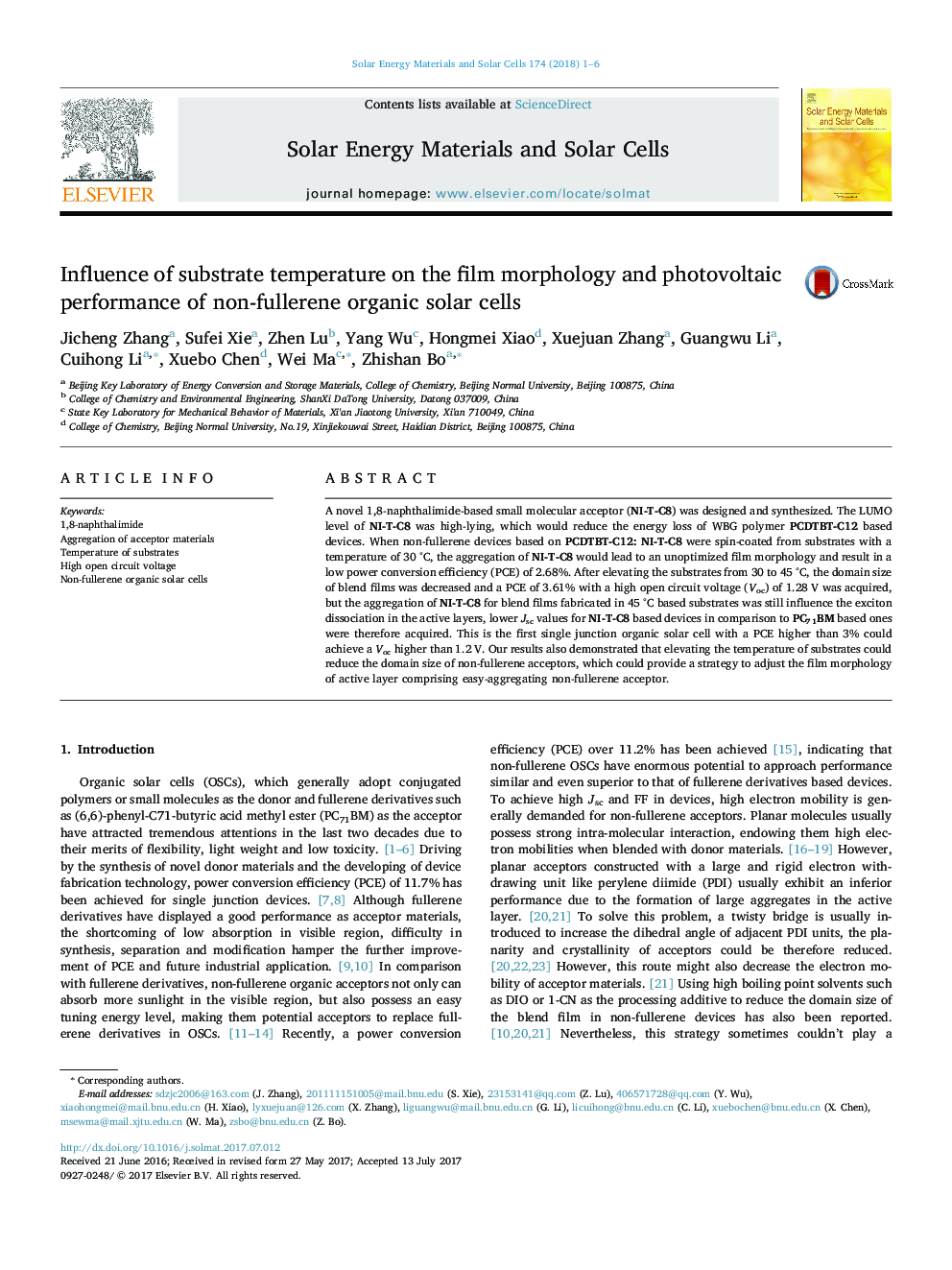| Article ID | Journal | Published Year | Pages | File Type |
|---|---|---|---|---|
| 6456620 | Solar Energy Materials and Solar Cells | 2018 | 6 Pages |
â¢A PCE of 3.61% with a high Voc of approximate 1.3 V was acquired for organic solar cells.â¢The aggregation of acceptor materials was decreased with the elevating of the substrate temperature.â¢Adjusting the aggregation of non-fullerene acceptors via changing the temperature of substrates was firstly investigated.
A novel 1,8-naphthalimide-based small molecular acceptor (NI-T-C8) was designed and synthesized. The LUMO level of NI-T-C8 was high-lying, which would reduce the energy loss of WBG polymer PCDTBT-C12 based devices. When non-fullerene devices based on PCDTBT-C12: NI-T-C8 were spin-coated from substrates with a temperature of 30 °C, the aggregation of NI-T-C8 would lead to an unoptimized film morphology and result in a low power conversion efficiency (PCE) of 2.68%. After elevating the substrates from 30 to 45 °C, the domain size of blend films was decreased and a PCE of 3.61% with a high open circuit voltage (Voc) of 1.28 V was acquired, but the aggregation of NI-T-C8 for blend films fabricated in 45 °C based substrates was still influence the exciton dissociation in the active layers, lower Jsc values for NI-T-C8 based devices in comparison to PC71BM based ones were therefore acquired. This is the first single junction organic solar cell with a PCE higher than 3% could achieve a Voc higher than 1.2 V. Our results also demonstrated that elevating the temperature of substrates could reduce the domain size of non-fullerene acceptors, which could provide a strategy to adjust the film morphology of active layer comprising easy-aggregating non-fullerene acceptor.
Graphical abstractDownload high-res image (349KB)Download full-size image
